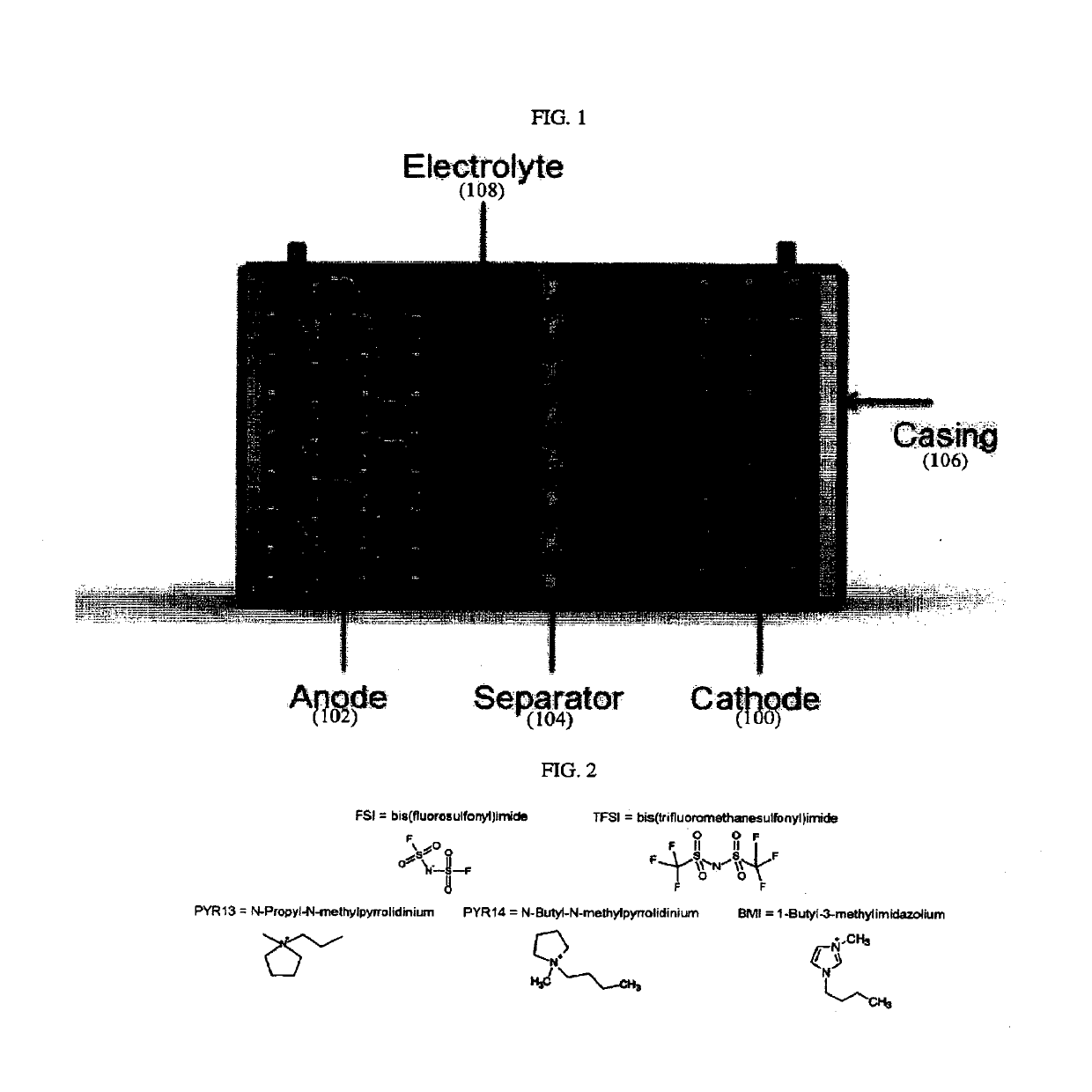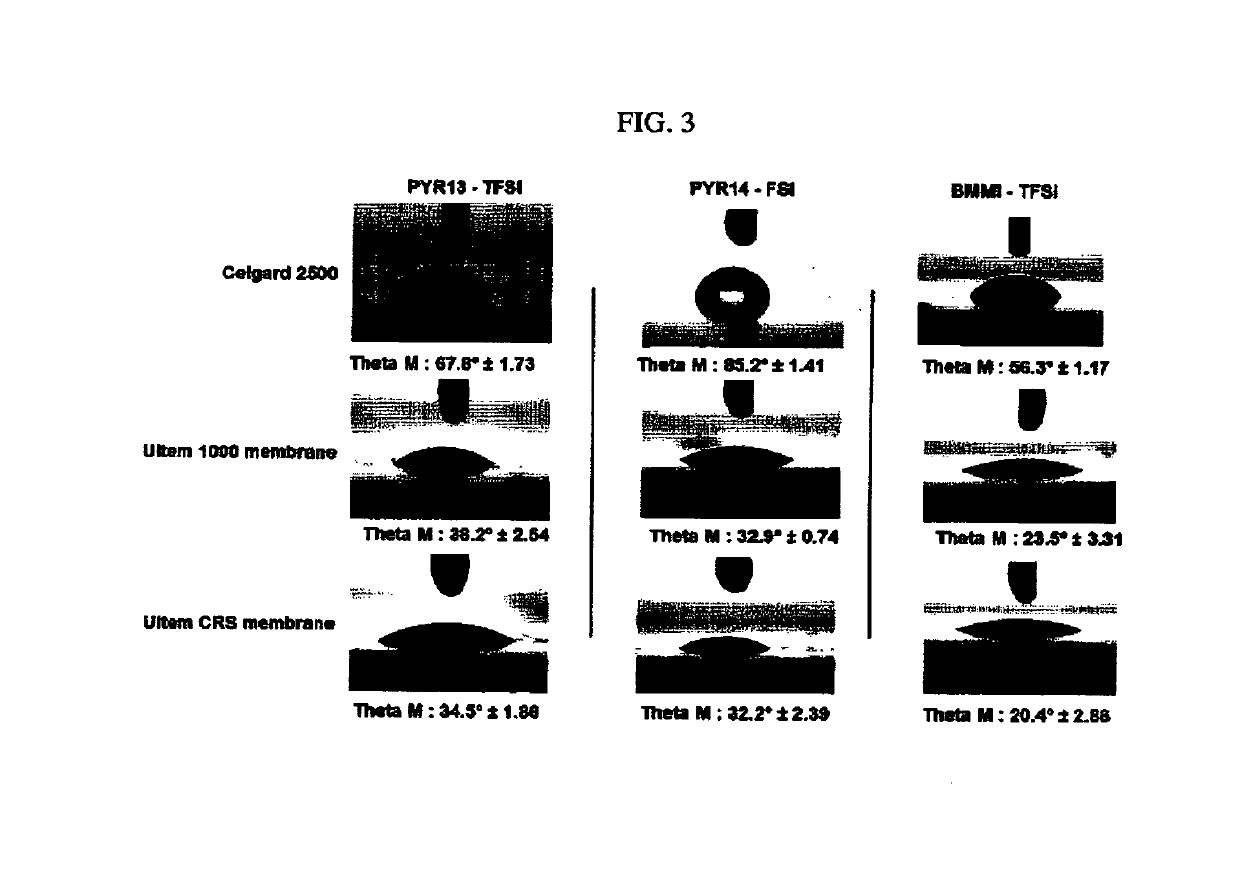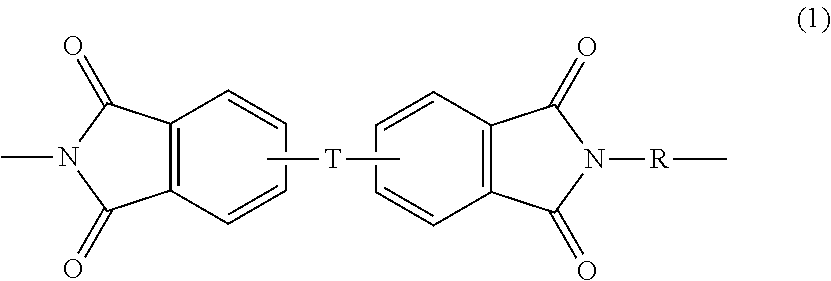SEPARATORS, ARTICLES and METHODS OF MAKING THEREOF
- Summary
- Abstract
- Description
- Claims
- Application Information
AI Technical Summary
Benefits of technology
Problems solved by technology
Method used
Image
Examples
example
Materials and Methods
[0052]Separators were produced by dissolving dried ULTEM polyetherimide in N-methyl pyrrolidone (NMP) to form a dope solution at room temperature or 200° C. After cooling the solution to room temperature, the viscous solution was cast on a glass plate using a K202 film coater (RK Printcoat) with a bird applicator of 75 micron gap thickness at a speed of 8 m / min. The glass plate with the cast, wet film was immediately placed into a coagulation bath (1.5-2.0 L) and left for 1 hour, after which time the formed separator was placed in pure water for 1 day and, after a final wash in methanol, the separators were dried for 1 hour at 200° C. under vacuum. Table 1 summarizes the preparation conditions and the corresponding sample coding for the various separators. While membranes 1 and 2 in Table 1 were selected for these studies, one or ordinary skill in the art would understand that the membrane properties, such as thickness, pore size, total porosity, Gurley, basis w...
embodiment 1
[0063]A separator 104, comprising a porous polyetherimide membrane comprising a plurality of pores, wherein at least a portion of the pores comprise an electrolyte composition comprising an ionic liquid.
embodiment 2
[0064]The separator of embodiment 1, wherein the separator has one or more of the following properties: an ionic liquid contact angle of less than or equal to 50°, preferably less than or equal to 30°; a thickness of about 5 micrometers to about 200 micrometers, preferably about 10 micrometers to about 30 micrometers; a basis weight of 2 to 40 g / m2, preferably 5 to 15 g / m; a porosity of 10% to 90%, preferably 35% to 60%; an average pore size is 2 nm to 2000 nm, preferably 10 nm to 200 nm; a Gurley air permeability of 10 to 1000 s / 100 cc, preferably 20 to 500 s / 100 cc; a dimensional stability of >120° C., preferably >180° C.; or a normalized dry weight of greater than or equal to 90% after 7 days at 55° C. in the ionic liquid.
PUM
| Property | Measurement | Unit |
|---|---|---|
| Temperature | aaaaa | aaaaa |
| Temperature | aaaaa | aaaaa |
| Temperature | aaaaa | aaaaa |
Abstract
Description
Claims
Application Information
 Login to View More
Login to View More - Generate Ideas
- Intellectual Property
- Life Sciences
- Materials
- Tech Scout
- Unparalleled Data Quality
- Higher Quality Content
- 60% Fewer Hallucinations
Browse by: Latest US Patents, China's latest patents, Technical Efficacy Thesaurus, Application Domain, Technology Topic, Popular Technical Reports.
© 2025 PatSnap. All rights reserved.Legal|Privacy policy|Modern Slavery Act Transparency Statement|Sitemap|About US| Contact US: help@patsnap.com



